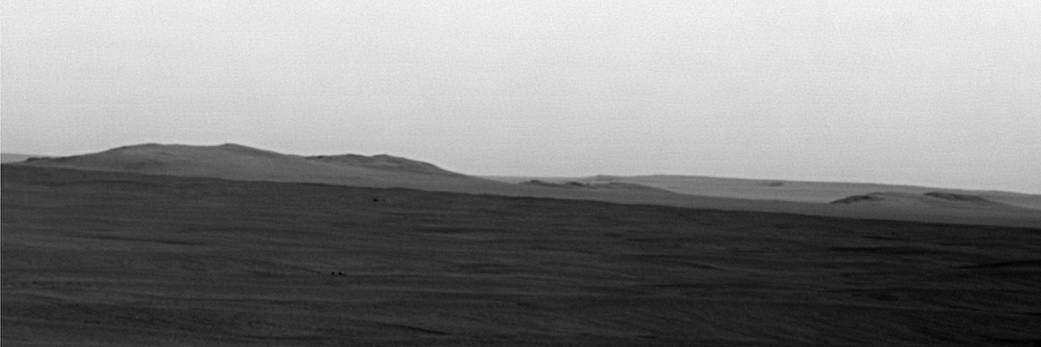Since the summer of 2008, when NASA’s Mars Exploration Rover Opportunity finished two years of studying Victoria Crater, the rover’s long-term destination has been the much larger Endeavour Crater to the southeast. By the spring of 2010, Opportunity had covered more than a third of the charted, 19-kilometer (12-mile) route from Victoria to Endeavour and reached an area with a gradual, southward slope offering a view of Endeavour’s elevated rim.
On the 2,239th Martian day, or sol, of Opportunity’s mission on Mars (May 12, 2010), the rover used its panoramic camera (Pancam) to take multiple exposures of the horizon toward the southeast. The Pancam team combined these images into this super-resolution view showing details of a portion of the rim of Endeavour about 13 kilometers (8 miles) away plus more-distant features. Super-resolution is an imaging technique combining information from multiple pictures of the same target in order to generate an image with a higher resolution than any of the individual images.
Above the dark plains in the lower portion of the view, the horizon in the left half is mostly a portion of Endeavour’s western rim. The paler-looking terrain on the horizon beyond Endeavour in the right half of the image is part of a thick deposit of material ejected by the impact that excavated Iazu Crater, south of Endeavour. The observed increase in brightness of Iazu’s ejecta relative to Endeavour’s features is consistent with modeling by science team members Michael Wolff, of the Space Science Institute, and Ray Arvidson, of Washington University in St. Louis, applying optical characteristics Opportunity has measured in the Martian atmosphere.
After the rover team chose Endeavour as a long-term destination, the goal became even more alluring when observations with the Compact Reconnaissance Imaging Spectrometer for Mars, also on the Mars Reconnaissance Orbiter, found clay minerals exposed at Endeavour. James Wray, of Cornell University, and co-authors reported observations of those minerals in Geophysical Research Letters in 2009. Clay minerals, which form under wet and relatively neutral pH conditions, have been found extensively on Mars from orbit but have not been examined on the surface. Additional observations with that spectrometer are helping the rover team choose which part of Endeavour’s rim to visit first with Opportunity.
Image Credit: NASA/JPL-Caltech/Cornell University› View annotated image
2 min read




























